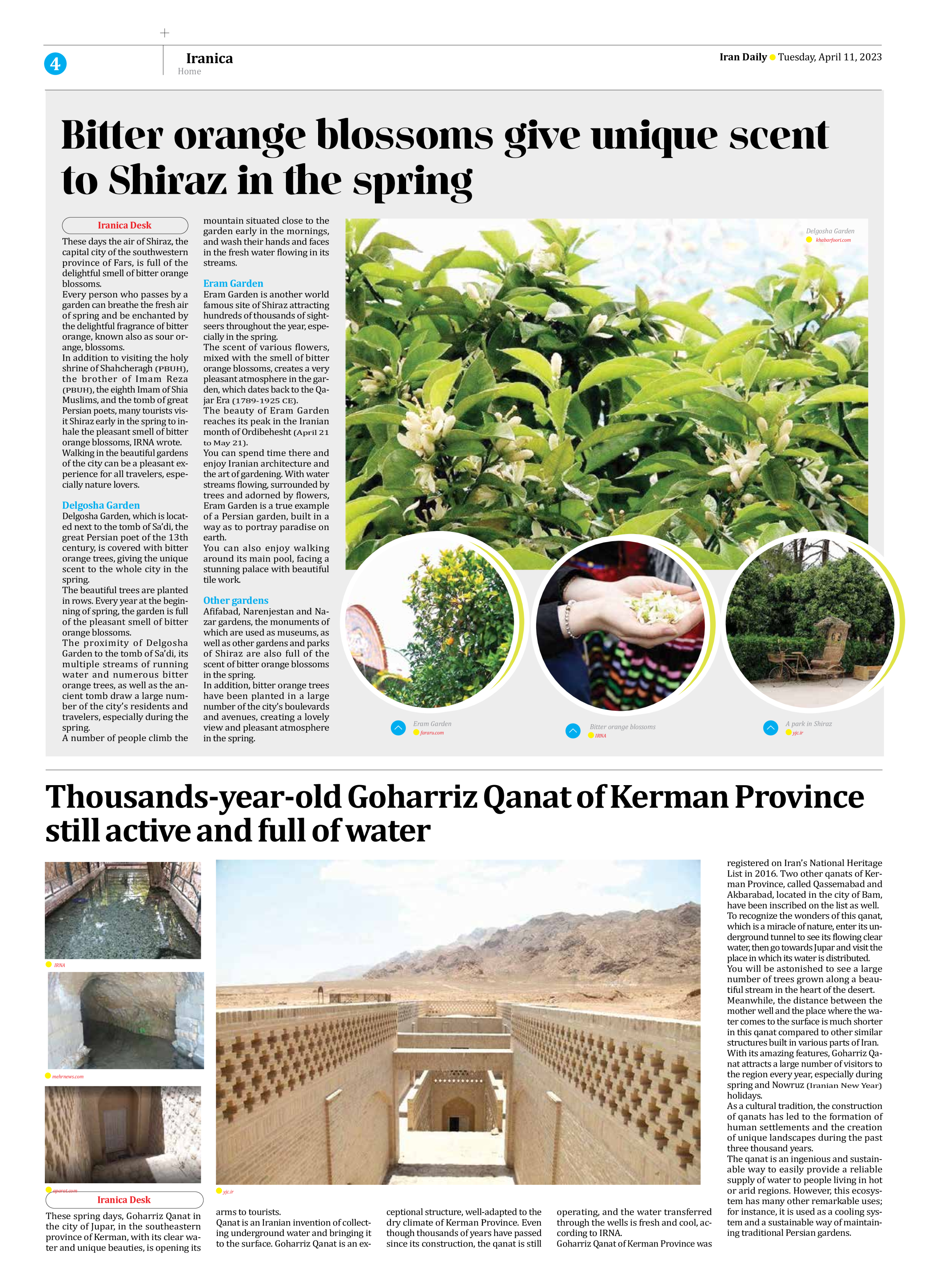
Thousands-year-old Goharriz Qanat of Kerman Province still active and full of water
These spring days, Goharriz Qanat in the city of Jupar, in the southeastern province of Kerman, with its clear water and unique beauties, is opening its arms to tourists.
Qanat is an Iranian invention of collecting underground water and bringing it to the surface. Goharriz Qanat is an exceptional structure, well-adapted to the dry climate of Kerman Province. Even though thousands of years have passed since its construction, the qanat is still operating, and the water transferred through the wells is fresh and cool, according to IRNA.
Goharriz Qanat of Kerman Province was registered on Iran’s National Heritage List in 2016. Two other qanats of Kerman Province, called Qassemabad and Akbarabad, located in the city of Bam, have been inscribed on the list as well.
To recognize the wonders of this qanat, which is a miracle of nature, enter its underground tunnel to see its flowing clear water, then go towards Jupar and visit the place in which its water is distributed.
You will be astonished to see a large number of trees grown along a beautiful stream in the heart of the desert.
Meanwhile, the distance between the mother well and the place where the water comes to the surface is much shorter in this qanat compared to other similar structures built in various parts of Iran.
With its amazing features, Goharriz Qanat attracts a large number of visitors to the region every year, especially during spring and Nowruz (Iranian New Year) holidays.
As a cultural tradition, the construction of qanats has led to the formation of human settlements and the creation of unique landscapes during the past three thousand years.
The qanat is an ingenious and sustainable way to easily provide a reliable supply of water to people living in hot or arid regions. However, this ecosystem has many other remarkable uses; for instance, it is used as a cooling system and a sustainable way of maintaining traditional Persian gardens.







